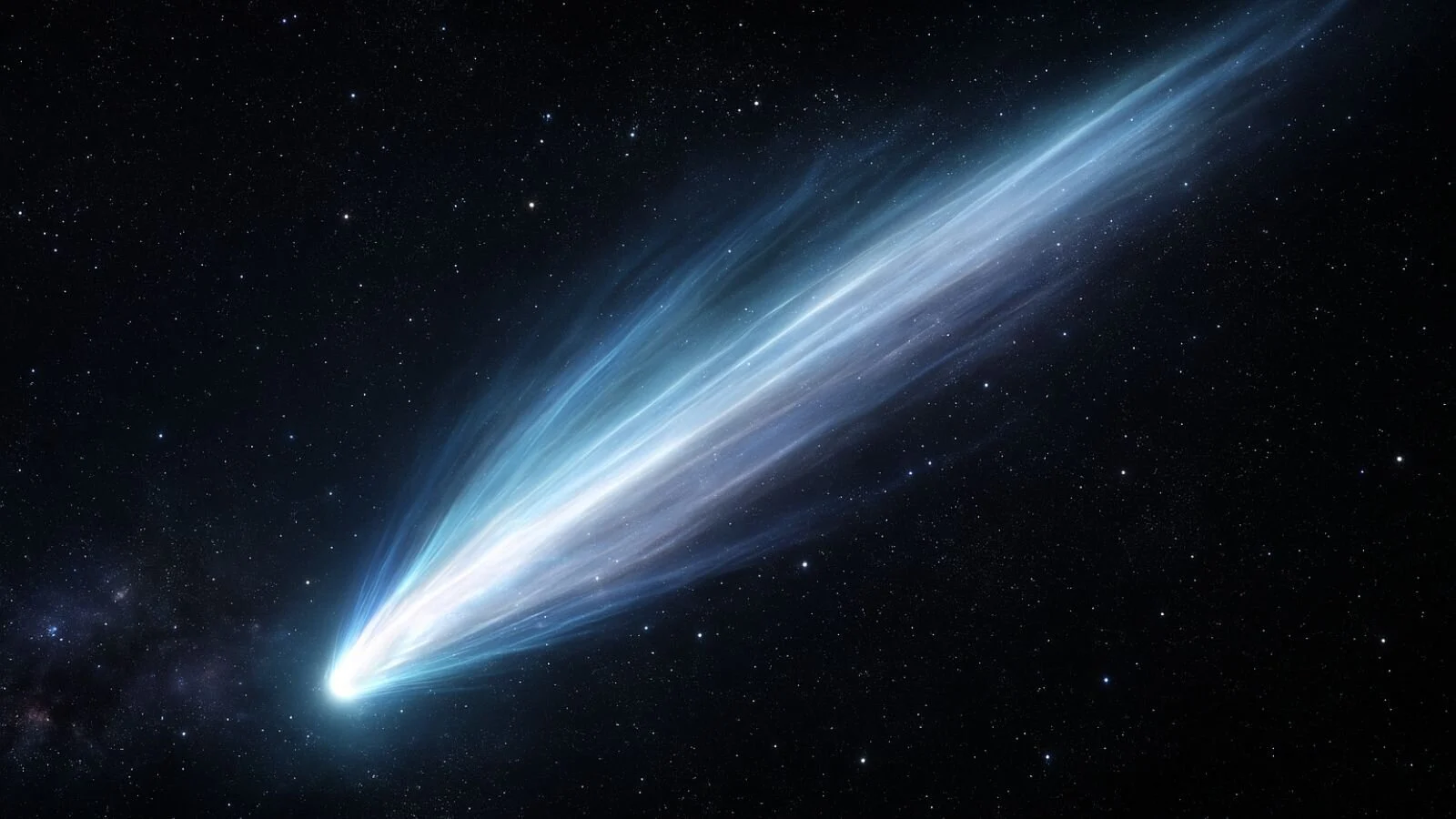21 NOVEMBER, 2025 – CERRO PACHÓN, CHILE
In a monumental leap for cosmology that promises to redefine our understanding of the cosmos, the Vera C. Rubin Observatory has torn back the veil on the ‘hidden universe,’ announcing today the discovery of a celestial structure of such staggering proportions that it challenges existing models of galactic formation and dark matter. At 11:00 GMT, an international consortium of scientists revealed the detection of a colossal stream of stars, a gossamer thread of ancient suns stretching an unprecedented 1.7 million light-years across the intergalactic void—a structure longer than the entire diameter of our own Milky Way galaxy. This faint, phantasmal river of light, designated Stellar Stream Prime-01 (SSP-1), has remained invisible to every telescope until now, its discovery heralding the triumphant beginning of Rubin’s Legacy Survey of Space and Time (LSST) and fulfilling its promise to peer into the darkest, most subtle realms of the cosmos.
The discovery was not the result of a targeted search but a testament to the Rubin Observatory’s raw, unprecedented power. The stellar stream, now the largest and most distant ever recorded, was identified in the very first full-depth, wide-field images from the LSST, data taken just weeks ago as the observatory commenced its ten-year survey. For decades, such structures were theorized to be the skeletons of the cosmic web, the delicate remnants of smaller galaxies torn apart and stretched into impossibly long tendrils by the gravitational tides of larger galaxies. However, their faint, diffuse nature made them nearly impossible to see. Dr. Anya Sharma, the project lead for the stream analysis team, could barely contain her excitement in the press conference, stating, “We knew Rubin would be a game-changer, but to find something of this magnitude so early is beyond our wildest expectations. It’s like turning on a light in a dark room and discovering a mural the size of a continent on a wall you thought was blank. This isn’t just an object; it’s a fossil record of the universe’s violent history, written in starlight.”
The sheer scale of SSP-1 is its most immediately baffling characteristic. Measuring over 1.7 million light-years from end to end, it dwarfs not only previous record-holders like the Gaia Sausage stream but also our home galaxy, which spans a mere 105,000 light-years. This immense length suggests a cataclysmic origin story. The prevailing hypothesis among the discovery team is that SSP-1 is the ghostly corpse of a dwarf galaxy that ventured too close to a massive galaxy cluster hundreds of millions of years ago. The cluster’s immense gravitational forces acted like a cosmic spaghetti factory, pulling the dwarf galaxy apart, smearing its stars across a vast expanse of intergalactic space. Dr. Ben Carter, an astrophysicist specializing in galactic dynamics, explained the process, remarking, “What we are seeing is the aftermath of a gravitational assassination. The parent galaxy has been completely dismantled, and its stars are now tracing the path of their own destruction—the fundamental orbit dictated by dark matter. This stream is a pure gravitational tracer, a contour line on the map of the invisible mass that dominates our universe.”
This last point is crucial and underscores the primary scientific value of the discovery. The existence and precise geometry of SSP-1 serve as the most sensitive probe to date for mapping the distribution and clumpiness of dark matter in the universe. Dark matter, which does not emit, absorb, or reflect light, reveals itself only through its gravitational influence. The stream’s stars are like billions of individual sensors, moving solely under the pull of gravity. Any kinks, gaps, or variations in the stream’s density are direct fingerprints of interactions with unseen clumps of dark matter. Preliminary analysis already suggests the stream is too smooth, lacking the expected perturbations from small-scale dark matter halos. This could have profound implications, potentially challenging the prevailing Lambda-Cold Dark Matter (ΛCDM) model of the universe. Dr. Kenji Tanaka, a theorist on the team, noted cautiously, “The pristine, unbroken nature of this stream over such a vast distance is puzzling. If our current models of dark matter substructure are correct, it should look more like a string that has been nibbled by mice. The fact that it appears so smooth forces us to ask difficult questions: Is dark matter ‘warmer’ or more interactive than we thought? Or are our simulations of hierarchical structure formation missing a key piece?”
The detection was made possible by the Rubin Observatory’s unique technological arsenal, centred around the 8.4-meter Simonyi Survey Telescope and the 3.2-gigapixel LSST Camera, the largest digital camera ever built for astronomy. The key to seeing the invisible was Rubin’s ability to detect extremely low-surface-brightness phenomena, picking out the stream’s faint glow, which is over 100 times dimmer than the natural glow of the Earth’s own night sky. This requires not only a massive light-gathering mirror but also an exquisitely designed optical system that minimizes scattered light and an unprecedented data processing pipeline to subtract the foreground skyglow with phenomenal accuracy. Dr. Maria Flores, the lead systems engineer for the LSST Camera, emphasized the technical triumph, stating, “This is not a single image. It is the statistical combination of hundreds of sequential exposures taken in multiple optical filters, each one processed to remove every possible artifact and source of noise. We are essentially performing archaeology on photons, sifting through the dirt of the bright sky to find these precious, ancient relics. This stream was always there; we simply never had an instrument with the sensitivity and the field of view to see it until now.”
The implications of SSP-1 extend far beyond a single record-breaking object. Its discovery suggests that the cosmos is likely teeming with such colossal, faint structures, forming a previously unseen framework—a cosmic web of stellar streams connecting galaxies and clusters. The discovery effectively opens a new field of astronomy: the systematic census and study of the intergalactic stellar population. As the LSST continues its decade-long survey, it is expected to find thousands, if not tens of thousands, of similar streams, each telling its own story of galactic interaction and the gravitational influence of dark matter. This will allow astronomers to move from studying individual cases to understanding the population statistics of these structures, revolutionizing our knowledge of how galaxies assemble and evolve over billions of years.
Looking forward, the Rubin team has already triggered a global “Target of Opportunity” alert, directing the world’s most powerful telescopes—including the James Webb Space Telescope and the Chandra X-ray Observatory—towards SSP-1. The goals are to measure the precise metallicity of its stars to confirm their ancient, primordial origins, to search for any associated X-ray gas that might have been stripped from the progenitor galaxy, and to use its immense length to conduct a three-dimensional mapping of the dark matter field along its entire path. The discovery positions the Vera C. Rubin Observatory not just as a new telescope, but as the foundational instrument for a new era of cosmic cartography, one that maps both the seen and the unseen components of our universe.
As Dr. Sharma concluded in her statement, “On November 21, 2025, our map of the universe just grew exponentially more detailed and infinitely more mysterious. We have looked into the hidden universe and found a giant. And this is only the first few weeks of our survey. One can only imagine what other ghosts and giants are waiting in the dark, ready for their moment to be seen.” With the Vera C. Rubin Observatory now in full swing, the once-hidden universe is finally, and spectacularly, coming to light.




